| Umělec 1999/7 >> I Am Not Interested In Local Context (Interview with Zbigniew Libera) | Просмотр всех номеров | ||||||||||||
|
|||||||||||||
I Am Not Interested In Local Context (Interview with Zbigniew Libera)Umělec 1999/701.07.1999 Sven Spieker | q & a | en cs |
|||||||||||||
|
One of the most controversial Central European conceptual artists, Zbigniew Libera lives and works in Warsaw, Poland. Between 1985 and 1989 Libera participated in the artists’ group “Sternenhoch,“ of which he was also a co-founder. Between 1988 and 1990, he worked as a model for Zofia Kulik. In the West, he is best known for his Lego. Seven sets of blocks in card boxes (1997). Libera has exhibited in several European countries as well as in the US.
In America, artists don’t really assume that the government is interested in them. There is an assumption that the government is completely indifferent to art. This may be true, to a lesser extent, for Western Europe, too. Artists have to find sponsors who will support them. Do you think that in Central and Eastern Europe, there is still more of an understanding that there ought to be recognition by those “above“ for art? Do you think that that this kind of thinking might be a legacy of the Communist past? Some time in the 1950s, when Socialist Realism was finished in Poland, artists were allowed to exhibit. It was a bit like “ok, you can do what you want but you have to know that you have to organize everything yourself.“ This was very socialist! After twenty or thirty years of living in such conditions we have developed a special kind of audience... Nowadays in Poland there are no more than 500 people who are really interested in art. No more than that. This is not even one percent of the population here. This means that we can’t count on any support from the government, not even on any money. Last year our budget for culture was 0.6% of all state expenditures, even less than 1 percent. This year, 25% of this budget were cut. I don’t know how we will survive. If you have private contacts, you can sell something in the West, you will survive and you will be able to do your art. But if you don’t have such possibilities, you just do nothing or you have to make money for a living - and that does not leave enough time to do art. Tell me something about the art market in Poland, if there is such a thing. You mentioned that the place where we are sitting, the Art Center in Warsaw, is one of the only places where a contemporary Polish artist can exhibit his or her work. I don’t know to what extend this place sells art, but if it doesn’t sell... is there at all a system of galleries that represent artists and sell their art? This is the very beginning of the art market in Poland. The Art Center, for example, cannot operate like a commercial gallery because it is supported by the Polish Ministry of Culture. Of course they do occasionally acquire artworks, there is even a small collection. But often they don’t have enough money to do it on their own. I think that the last time the Art Center bought something, about two years ago, they were sponsored by a cigarette company. Of course you can find some galleries... I think in Warsaw there are about 40-60 of them. But what they sell is like the kind of thing you would expect to find in souvenir shops. Actually, in Warsaw we don’t have any private galleries for contemporary art, even though two exist in Cracow. Are there any private collectors of contemporary art in Poland? We still don’t have a class of people who are interested in collecting contemporary art. Those people, who are able to buy art today, do so with a mentality that belongs to the 19th Century. They treat a work of art as a kind of investment rather than as a support for the artist. Of course I know some small collectors in Poland, but they are not able to buy many works. You can occasionally sell them a photograph or a drawing. The class that is genuinely interested in art and would like to have the collections, the intellectuals, simply don’t have the money! I was really interested in what you said about the art market and the role played by the collector. What this means is that the Polish artist essentially participates or tries to participate in the Western art market. This of course is a great problem because he or she is a latecomer, a newcomer to that market. To what extent are artists from Central and Eastern Europe able to participate in the mechanism that regulates the art market in the West? To what extend are they excluded from it, to what extend are they allowed to participate? I remember the last years of the 1980s, the beginning of the 90s. There was an article in Newsweek that rated artists from Central and Eastern Europe. The journalist was very interested in the value of this art. He was not sure if this was something expensive or whether it was perhaps just garbage, fifty years behind. I think the situation is still pretty much the same. Of course we have a couple of artists who are present on the Western art scene, very few... Such as Krzysztof Wodiczko or Magdalena Abakanowicz. Yes, but Wodiczko emigrated during the seventies. What he is doing now is really Western. I meant rather people like Balka. Who did not emigrate. Who did not emigrate. In fact Wodiczko is a Western artist. He is not present in our local scene. It is very, very rare to see his exhibitions in Poland. But there are some who are present in the Western world while they still live in their own countries. From time to time you can see exhibitions organized by Western collectors that try to show what is going on in Eastern Europe. After these exhibitions you find new artists who become present in the Western world. Over time it happens that these artists emigrate because there are no possibilities for them to work in their own countries. I also think that I will emigrate some day. Is success for an artist in Poland incompatible with his/her success abroad, in Western Europe or the United States? I know some young Polish artists whose work seems interesting to Western critics and galleries but who are not at all understood here in Poland. They don’t even have any exhibitions here, they don’t receive any invitations. I think their presence in the West has to do with the fact that they started to think in a Western way. They just had to break the chain that tied them to the Polish tradition and had to start to think in a more modern, contemporary, Western way. Perhaps that is why they are not acceptable here in Poland. So it is an indication of success (in the West) not to be acceptable at home (in Poland)? It seems to be like this. Even Miroslaw Balka is not really understood here, even though everybody knows him. At the time of the Cold War, how did Polish artists react to their exclusion from the Western art market? During the 1980s [the period of martial law in Poland] I belonged to a group of artists, about two hundred people, who refused to show their work in churches, the only “galleries“ open at the time. We did not want to produce objects to hang them in a museum. For us, objects were of no importance whatever. Objects, as far as we were concerned, were only a pretext. Consequently, what we produced was never well framed and always of inferior quality... after all, this was not the market! Instead, what was important was how you behaved, what kind of sense of humor you had... it was a bit like Dada or the hippie movement. The context was very important, and your common sense. This was my first real important experience with art. Do you feel nostalgic in any way? Oh no. It felt like hell. There was no food in the stores, the only thing you could get was Vodka... I mean nostalgic not so much for the period as such but for that group of artists. I remember this period primarily as darkness and a lot of alcohol. But of course there was also a sense of humor to it, a kind of black, depressive humor. Of course, we don’t have any such close connections with other artists now. But this was not a happy time. We just tried to forget the outside world, we tried to forget the militia in the streets. I organized what could be described as an exhibition, although it wasn’t a real exhibition. A month after this event I was arrested and I spent one year in jail. After this experience I could not be a classical artist anymore. I could not see anything positive or valuable in a traditional painting, sculpture or drawing. Today, what would have to happen to legitimize the presence of artists from Central and Eastern Europe on the Western market? As soon as Western art and Western artists can be sold and bought here everything will change. But what happens is this: The Starmach Gallery in Cracow once organized an exhibition by a very well known Japanese photographer. I was sure that almost everything would be sold because the photographs were even quite cheap. Not even one work was sold! And it is not so much a question of financial ability, it is the inability of people living here to understand this kind of art. If one asked the question how and why artists from the countries from the former Eastern block should be present in Western art collections, one could argue that they shouldn’t, because their art was never created for that market... The artist in Eastern Europe during communism did not create art with a view to its inclusion in a museum, for the simple reason that to be represented in one of the official museums was a kind of disgrace. After the end of communism I started to think that now we have to change and we have to be ready to get our art into the museums. But then I realized that this is still impossible, not because of our financial problems, but because of our mental disposition. I was lucky, though, because I was invited a couple of times to large international exhibitions, I could make the right contacts and started to work with Western galleries. I am one of those rare cases of an artists from the former Eastern Bloc who is present in the West. But it is strange, I sometimes feel as if I have one leg here and one leg there. Perhaps it is better to emigrate, to be in a world that understands you and to which you speak. But still I count on fast changes here. What about art criticism? Another element of the art market is people writing about what you do. What is the situation in Poland? Do you know that we still don’t have a faculty of art criticism at the university? It was abolished during the forties when the Communists took power and decided that only art history was necessary. At that time the only thing that counted was to make a list of what they possessed and to try and keep this for the future. We don’t really have good art criticism here. Of course we have some people who were educated in the West... Polish artists were pretty much aware of what was going on in the West... Yes, they were. It was not like in Romania where the first contemporary work of art appeared during the seventies. In Poland, during the 1950s artists started doing more or less what was being done at the same time in the West. For us, the iron curtain was not all that closed. I think that during the Cold War, artists in Central and Eastern Europe assumed that they would as it were be virtually collected by Western art institutions, because they were after all producing art, particularly in Poland, with a view to the same artistic tradition as Western artists. Polish artists during the 60s, 70s, and 80s knew exactly what was being done in America, they knew what was being done in Western Europe. So that Polish art was always in some sense also a response to Western art. Yet after the end of the Cold War they discovered that Western galleries weren’t particularly interested in that response-they simply did not want to buy their work. There are three serious institutions for contemporary art in the former Communist countries, the Center for Contemporary Art in Warsaw, the Ludwig Museum in Budapest and the Modern and Contemporary Art Collection of the National Gallery in Prague. These institutions should start to collect post-Communist art so that people could find out about what happened during the 1990s. But of course these museums have other things to worry about than new acquisitions. Do you think it would help if these museums, provided they had the means, tried to develop their collections of Western contemporary art as well as those of art from the countries of the former Eastern Bloc? I think this would be futile, a waste of money, because they will never have a good collection of Western art. Instead they should have a good, representative collection of Central and Eastern European art. But it is important that the selection should not be made on the grounds of nationality. In Poland, there should also be Czech, Slovak, and Hungarian art. But, as you know, the national attitude is very strong. In Poland, for example, they collect largely Polish art - this needs to change. What about the Academy and other institutions designed to train young artists? When Milan Knížák became the chief of the Czech Academy of Fine Arts in Prague he began a kind of revolutionary sweep. He destroyed the old Aacademy and established a new one. That was very refreshing. In Poland we still have the old Academy with the old professors who are very often not even artists anymore. Many of them are quite old and they haven’t practiced art for twenty years. We badly need a new Academy. As far as I know, in Hungary, Bulgaria and Slovakia they have the same situation. Under these circumstances it is incredible that young people still try to be artists here. If I was in their position, the first thing I would do is I would go the West to study art. It seems as if what is needed to establish an art market, conceptually, is some kind of an understanding as to what constitutes something new or innovative. It appears as if this sort of thinking is lacking here, that there are no people who are interested in collecting something for the simple reason that they think it is innovative. On the contrary, it seems as if the people who buy art in Poland do so because they recognize it, because it coincides with their cliched ideas about art. You know, here in Poland the tradition is very strong. I think that now, after our liberation, one thing that is very important for Poles is to find their identity. That’s why they look to the past, to history and tradition rather than to novelty and innovation. This is why it is not valuable for them when somebody creates something new. I was born in this nation, I have the same experience like other Poles my age, but nevertheless I think differently. True, my ancestors came from Italy (I have an Italian name), and I was born in Lodz, a city of many different nations before the war. So I am not a typical Pole. I can see a gap between me and the rest of this society. Can you see something positive in that lack of identification? There must be something positive to it. The point is that nobody here knows how to make good use of artistic creativity. I think that culture should be supported by the government, as it happens in Germany where collections and museums offer support to artists, giving them a chance to do art in the future. They should start to think like that here in the post-Communist countries, too. I would like to talk briefly about Lego, your most controversial work to date. I have read the stories of how you were expelled from the Polish pavilion at the Venice Biennale three years ago. Could it be said that the non-acceptance of your work into the Polish pavilion was not an accident, that it was actually part of the work, part of its conceptual gesture? Everybody thought that what was depicted on these Lego-boxes was Auschwitz... But this is not so clear, it could be any place, really. But since it was to be exhibited in the Polish pavilion at the Biennale, everybody began to think that this must all have something to do with the Sho’ah. It all depends on the context. I think you are right. A completely unknown artist becomes known because he refuses to exhibit something... The effect of your piece is created also by the fact that you use a medium that it is shocking. Lego seems to have nothing to do with concentration camps... It is quite easy to create a scandal with works that represent concentration camps. But nobody had used Lego before. Still, my personal reasons for creating Lego were a little different from what many people think. I was interested in pedagogical issues, the educational system and the way society shapes us by giving us certain toys to play with. I think when you dig a little bit deeper you find that before they settled on plastic bricks, Lego manufactured wooden toys of the kind the German educational system used in the 19th Century. They were supposed to instill discipline and other virtues... Did you enjoy Lego when you were a child? No, I hated it. Lego was always well-known in Poland. There was a special shop called Pedex where you could buy Western toys for hard currency. Every Christmas, if the parents were rich enough and loved their children enough, they sneaked this piece of Western culture into the heads of their children. So I was infected by this disease from the very beginning. Perhaps, because of this I can also maintain a certain distance from it. I think there is a widespread assumption that Lego is some kind of monument to pop art... I don’t see my works as pop art. I use objects from popular culture, because I think that they act as carriers for a certain type of information. Take today’s toys and compare them to those of forty years ago. How strange they are, monstrous! I want to guess what the message is here. Every toy is a vehicle, we know that. But of what? What kind of idea does it carry? I think every toy is based on certain archetypes that are in us. It works like a link. Even in 19th Century doll, there is some kind of message. There is something universal in your work. Is this something that is important for you? Yes, I am not interested in the local context at all. I try to do things that are accessible, like archetypes. I want to talk about things that other cultures will understand. I don’t know why, but perhaps this has to do with my upbringing in a socialist country. Socialism teaches you that you are not only a Pole but that you also belong to the human race. Of course, there was something else lurking behind these things, a hidden nationalism.
01.07.1999
Рекомендуемые статьи
|
|||||||||||||
|
04.02.2020 10:17
Letošní 50. ročník Art Basel přilákal celkem 93 000 návštěvníků a sběratelů z 80 zemí světa. 290 prémiových galerií představilo umělecká díla od počátku 20. století až po současnost. Hlavní sektor přehlídky, tradičně v prvním patře výstavního prostoru, představil 232 předních galerií z celého světa nabízející umění nejvyšší kvality. Veletrh ukázal vzestupný trend prodeje prostřednictvím galerií jak soukromým sbírkám, tak i institucím. Kromě hlavního veletrhu stály za návštěvu i ty přidružené: Volta, Liste a Photo Basel, k tomu doprovodné programy a výstavy v místních institucích, které kvalitou daleko přesahují hranice města tj. Kunsthalle Basel, Kunstmuseum, Tinguely muzeum nebo Fondation Beyeler.
|







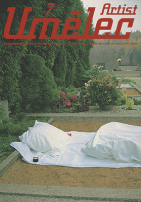











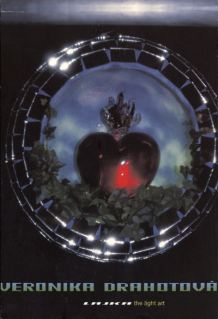




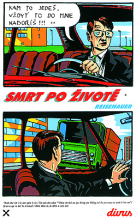
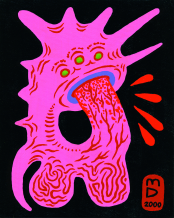
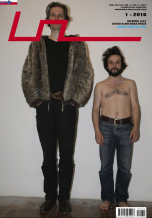
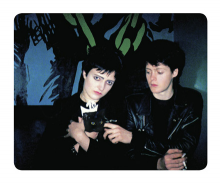


 We Are Rising National Gallery For You! Go to Kyjov by Krásná Lípa no.37.
We Are Rising National Gallery For You! Go to Kyjov by Krásná Lípa no.37.
Комментарии
Статья не была прокомментированаДобавить новый комментарий